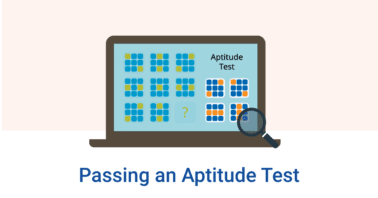Your recruiting process is costing you.
Between sourcing candidates online, spending 30 minutes on the phone with each of those candidates, and deciding which one is best-suited for the job, how much time do you spend searching for the right candidate? Probably more time than you need to be.
Let’s be honest — you don’t need a full 30 minutes to decide whether to bring a candidate in for an in-person interview. In fact, it takes 25 percent of hiring professionals only five minutes to come to a decision on a candidate, according to a recent study by researchers from Old Dominion, Florida State and Clemson.
With so little time needed to make a decision about candidates and so many candidates to screen and interview, here are three recruiting tips to help you speed up the process.
Table of Contents
1. Build your talent pool
One surefire way to save time during the recruiting process is to always have options ready to go. Instead of taking the reactive approach to recruiting (and getting stuck in a constant state of catch-up), save yourself the headache (and time), and be proactive. Start your search way before the job order comes in, and build a talent pool to stay ahead of client needs.
Having an internal database of candidates within your niche ensures that quality talent is readily available when it’s time to fill a new position. Not convinced that planning ahead is essential? Consider recent research by Bullhorn that revealed that respondents made nearly half of their total hires using candidates from their internal databases.
Always be on the lookout for high-potential talent to fill your talent pool. One great place to start is with runner-up candidates. While they might not have been the right fit for one job, they may be just the right fit for another. Additionally, when sourcing candidates online, try creating a private Twitter list of possible candidates to reach out to.
2. Hang up the phone
There was a time when the phone interview made sense — it was the most convenient way to get in touch with candidates without having to wait and schedule an hour block of time to meet later in the week. But, as with all things, something bigger and better has come along: one-way video interviews.
One-way video interviews give you the same candidate insight that a phone interview does — and then some. Unlike phone screens, you have a chance to visually assess candidates based on non-verbal cues like facial expressions, body language, and attire. Not to mention, video recordings make it easier to compare candidates and gain insight from others, including clients.
The best part about it? You can eliminate pesky scheduling conflicts and screen more candidates in less time, at your own pace. Imagine being able to assess 10 candidates in the time it takes to complete a single phone screen. That’s how much time you’ll save, according to the Aberdeen Group.
Considering 60 percent of hiring decisions were made in the first 15 minutes of an interview, according to the aforementioned study by Old Dominion, Florida State and Clemson, there’s no need to spend upwards of 30 minutes on the phone with each candidate.
3. Use big data to make big decisions
Big data plays a big role in the recruiting process, as it helps recruiters predict which candidates are likely to flourish or flail. Gone are the days of sifting through stacks of paper resumes and hiring based on gut feeling alone.
Modern recruiting relies on data-driven insights garnered from online resume databases, social media profiles, employment records, job applications, and other similar resources to accurately assess and predict a candidate’s ability to succeed in any given role. More data means more informed decisions.
While big data analytics can save recruiters time (and paper cuts) flipping through one resume after another, it also paints a complete picture of a candidate long before they step foot in the office for an in-person interview. Then you can spend less time gathering information on candidates and more time interpreting results.
What are some other time-consuming recruiting processes that you can save time on?
Source: Brazen Careerist




